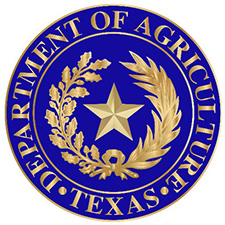(AG Insider) The coronavirus pandemic punctured the Farm Belt euphoria of early 2020 and sent a Purdue University gauge of farmer confidence plunging by 28 percent in one month. Three-fourths of producers taking part in the monthly Ag Economy Barometer said they were worried about the impact on their farm’s profitability and 62 percent said they expected the USDA would issue billions of dollars in trade war payments this year.
Farmer confidence tumbled during March to its lowest level since last May, just weeks after soaring to an all-time high, said Purdue on Tuesday. Purdue polled farmers and ranchers from March 16-20, during the early days of the government’s “15 days to flatten the curve” drive and as Covid-19 deaths began to rise and stay-at-home orders were being adopted.
“The big drop in sentiment this month is largely attributable to farmers’ concerns about the impact of the coronavirus on their farm’s profitability in 2020,” said Purdue economist James Mintert in a video recap. Forty percent of producers said they were “very worried” and 34 percent were “fairly worried” about the potential impact.
Farmers and ranchers also were less optimistic about restoration of agricultural trade with China. Only 45 percent of producers anticipated trade war payments in February, when the “phase one” China-U.S. agreement was signed. But few large sales were announced and now 62 percent expect the so-called Market Facilitation Program payments. “This is a big change from February,” said Mintert.
Purdue surveyed producers before Congress drafted the $2 trillion coronavirus relief package that included $23.5 billion in aid for agriculture. Agriculture Secretary Sonny Perdue has almost unlimited power to divide the money among producers. Market prices have fallen for cattle, hogs, corn, soybeans, cotton, and fruits and vegetables in the face of a looming recession.
The National Farmers Union urged Perdue to “swiftly and efficiently” distribute aid to producers. “Assistance must be targeted to farmers, not large agribusinesses, and farmers receiving payments must be subject to the payment limits and income limitations in the 2018 farm bill,” it said. Perdue effectively doubled the payment limit when he set up MFP and Congress for the most part removed a ban on payments to people with more than $900,000 adjusted gross income.
The NFU also called for release of coronavirus relief funds to support telemedicine and rural critical access hospitals.
Two dairy groups, the National Milk Producers Federation and the International Dairy Foods Association, said the Trump administration must “go above and beyond traditional programs and solutions to bring balance and certainty to the dairy industry.” Milk production surges in the spring and will coincide this year with stay-at-home orders that have sapped dairy demand. The organization urged USDA to reduce the projected milk surplus of 10 percent by buying dairy products for donation.
Purdue bases the Ag Barometer on a survey of 400 farmers and ranchers who each produce at least $500,000 of goods annually. The USDA says 90 percent of US farms have less than $350,000 in gross cash farm income annually and that two-thirds of U.S. farm production occurs on the 8 percent of farms that are classified as midsize or large-scale family farms.
The Ag Economy Barometer is available here.











